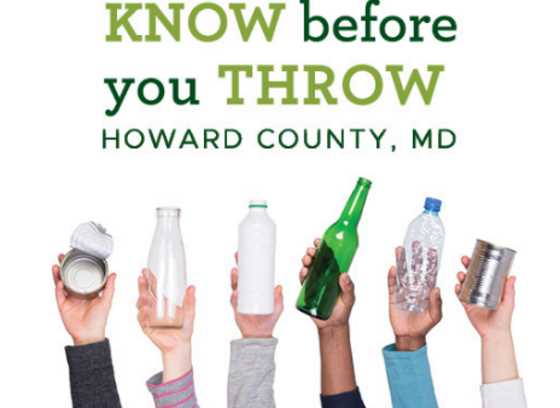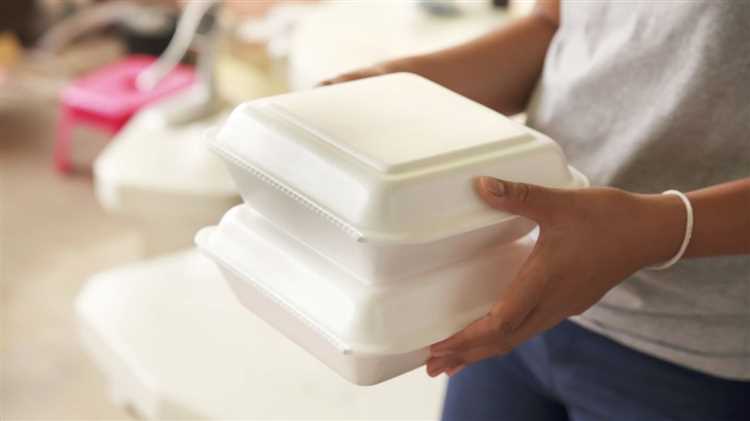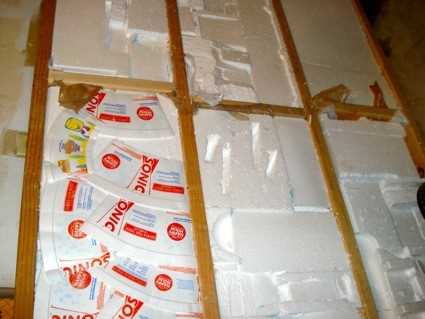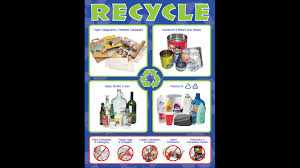
Styrofoam, also known as Expanded Polystyrene (EPS), is a lightweight material commonly used for packaging and insulation. While it is convenient for protecting fragile items, Styrofoam poses a significant environmental threat due to its non-biodegradable nature. In Maryland, efforts are being made to encourage the recycling of Styrofoam to reduce waste and protect our ecosystems.
One of the crucial facts to know about recycling Styrofoam in Maryland is that not all types can be recycled. Only clean, white Styrofoam without any food residue or other contaminants can be recycled. This is because recycling facilities in Maryland have specific requirements for recycling Styrofoam, and contaminated foam can contaminate the entire batch, rendering it unrecyclable.
When it comes to recycling Styrofoam in Maryland, it is essential to remember that curbside collection programs typically do not accept it. Instead, residents are encouraged to drop off their clean, white Styrofoam at designated collection centers or special events organized by local recycling organizations. The collected Styrofoam is then processed and transported to recycling facilities, where it is turned into new products.
By recycling Styrofoam, residents of Maryland can contribute to the sustainability and preservation of their local environment. Recycling not only helps reduce the amount of Styrofoam waste that ends up in landfills but also conserves valuable resources and energy. It is important to raise awareness about the proper recycling guidelines for Styrofoam and encourage everyone to actively participate in this eco-friendly initiative.
- Why Styrofoam Recycling Matters
- 1. Environmental Impact
- 2. Limited Recycling Options
- 3. Resource Conservation
- 4. Economic Benefits
- Environmental Impact of Styrofoam
- Styrofoam Recycling Process
- Benefits of Styrofoam Recycling
- Guidelines for Recycling Styrofoam in Maryland
- Recycling Centers in Maryland for Styrofoam
- Q&A,
- Can I recycle Styrofoam in Maryland?
- What is Styrofoam?
- Why is Styrofoam not accepted in regular recycling bins?
- How can I recycle Styrofoam in Maryland?
- What happens to the Styrofoam after it is recycled?
Why Styrofoam Recycling Matters
Styrofoam, also known as expanded polystyrene (EPS), is a lightweight and versatile material commonly used in packaging, insulation, and food service products. While it may be convenient and inexpensive, Styrofoam poses significant environmental challenges.
1. Environmental Impact

When Styrofoam is not properly disposed of or recycled, it ends up in landfills or finds its way into the natural environment. Styrofoam takes hundreds of years to break down, contributing to long-lasting pollution. It can also release toxic chemicals into the air and water, posing a risk to humans and wildlife.
2. Limited Recycling Options

Styrofoam recycling is not widely available due to its complex nature and low market demand. Most curbside recycling programs do not accept Styrofoam, and it is challenging for individuals to find community recycling centers that accept this material. As a result, the majority of Styrofoam waste ends up in landfills.
3. Resource Conservation
Recycling Styrofoam helps conserve valuable resources. The material is made from petroleum, a non-renewable resource. By recycling Styrofoam, we can reduce the demand for new materials and decrease our reliance on fossil fuels.
4. Economic Benefits
Styrofoam recycling can provide economic benefits to communities. The material can be compacted and melted down to produce new products, reducing the need for raw materials and creating job opportunities in the recycling industry.
Given the environmental impact, limited recycling options, and the potential for resource conservation and economic benefits, it is important to prioritize Styrofoam recycling. By properly recycling Styrofoam, we can minimize pollution, protect the environment, and work towards a more sustainable future.
Environmental Impact of Styrofoam

Styrofoam, also known as Expanded Polystyrene (EPS), is a commonly used material that has a significant environmental impact. Styrofoam is not biodegradable and can take hundreds of years to decompose. This means that once it is discarded, it remains in the environment for a very long time, contributing to pollution and waste.
One of the major environmental concerns about Styrofoam is its contribution to marine pollution. Styrofoam products are lightweight and easily wind up in waterways and oceans. Once in the ocean, they can break down into small pieces, called microplastics, which are harmful to marine life. Marine animals often mistake these microplastics for food, leading to ingestion and possible health issues.
Furthermore, Styrofoam is derived from fossil fuels, which are non-renewable resources. The production of Styrofoam contributes to greenhouse gas emissions, air pollution, and the depletion of natural resources. The manufacturing process also involves the use of chemicals that can be harmful to both human health and the environment.
When Styrofoam is incinerated, it releases toxic chemicals into the atmosphere, contributing to air pollution. Additionally, the disposal of Styrofoam in landfills takes up valuable space and can contaminate soil and groundwater.
Due to these negative environmental impacts, it is important to explore alternative packaging materials and recycling options for Styrofoam. By reducing our consumption of Styrofoam and opting for more sustainable alternatives, we can help mitigate its environmental impact and work towards a cleaner and healthier planet.
Styrofoam Recycling Process
Recycling styrofoam can help reduce waste and protect the environment. The process of recycling styrofoam involves several steps, including:
- Collection: Styrofoam waste is collected from various sources, such as businesses, households, and recycling centers. It is important to separate clean styrofoam from other recyclables and remove any contaminants.
- Compression: The collected styrofoam is then compressed to reduce its volume and make it easier to transport. This step helps save storage space and reduce transportation costs.
- Shredding: The compressed styrofoam is shredded into small pieces or pellets. Shredding helps break down the material into smaller components, making it easier to handle during the recycling process.
- Melting: The shredded styrofoam is then heated to a high temperature in a specialized machine called a foam densifier. The heat melts the styrofoam, converting it into a liquid form.
- Molding or Extrusion: The melted styrofoam can be molded into various shapes or extruded into sheets or other forms. These forms can then be used to make new products.
- Manufacturing: The molded or extruded styrofoam is used as raw material by manufacturers to produce new products, such as picture frames, insulation, and packaging materials.
It is important to note that not all types of styrofoam can be recycled. Only clean and white styrofoam can be recycled, while colored or contaminated styrofoam should be disposed of in the regular trash. Additionally, it is recommended to check with local recycling facilities or organizations to ensure they accept styrofoam for recycling.
By following the styrofoam recycling process, individuals and businesses can contribute to reducing waste, conserving resources, and protecting the environment for future generations.
Benefits of Styrofoam Recycling
Recycling Styrofoam has numerous benefits for both the environment and the community. Here are some of the key advantages:
- Reduced landfill waste: Styrofoam is a non-biodegradable material that takes hundreds of years to break down in landfills. By recycling Styrofoam, we can significantly reduce the amount of waste that ends up in landfills.
- Conservation of resources: Styrofoam is made from petroleum, a non-renewable resource. By recycling Styrofoam, we can conserve these valuable resources and reduce our dependency on fossil fuels.
- Energy savings: Recycling Styrofoam requires less energy compared to producing new Styrofoam. By recycling, we can save energy and reduce greenhouse gas emissions associated with the production process.
- Job creation: The recycling industry creates employment opportunities, contributing to the local economy. Recycling Styrofoam creates jobs in collection, sorting, processing, and transportation.
- Reduced pollution: When Styrofoam is improperly disposed of, it can break down into small pieces, posing a threat to wildlife and marine ecosystems. By recycling, we can prevent this pollution and protect our environment.
By understanding the benefits of Styrofoam recycling, we can encourage more individuals and businesses to participate in this important environmental initiative. Together, we can make a significant impact on reducing waste and conserving resources for future generations.
Guidelines for Recycling Styrofoam in Maryland
Recycling styrofoam in Maryland is an important step to reduce waste and protect the environment. Here are some guidelines to follow:
- Check with your local recycling center: Not all recycling centers accept styrofoam, so it’s important to check if they can process it.
- Separate and clean: Remove any labels, tape, or stickers on the styrofoam before recycling. Make sure it is clean and free from any contaminants.
- Break it down: Break the styrofoam into smaller pieces to reduce its volume. This makes it easier to recycle and transport.
- Look for drop-off locations: Some stores and businesses have drop-off locations specifically for styrofoam recycling. Find these locations and take your styrofoam there.
- Follow recycling instructions: Some recycling centers have specific instructions for recycling styrofoam. Follow these instructions to ensure that it can be processed correctly.
- Avoid putting in curbside recycling: In most cases, styrofoam cannot be recycled through curbside recycling programs. It is best to take it to a designated recycling center or drop-off location.
- Reuse if possible: Instead of recycling, consider reusing styrofoam if it is still in good condition. Styrofoam can be used for crafts or as packaging material for fragile items.
- Spread the word: Educate your friends, family, and neighbors about the importance of recycling styrofoam. Encourage them to follow proper recycling guidelines as well.
By following these guidelines, you can do your part in reducing styrofoam waste and protecting the environment in Maryland. Together, we can make a difference!
Recycling Centers in Maryland for Styrofoam
If you live in Maryland and want to recycle your styrofoam, there are a few recycling centers in the state that accept this material. These centers have established programs to responsibly collect and process styrofoam waste. Here are some of the recycling centers in Maryland where you can dispose of your styrofoam:
- Recycle It! USA: This recycling center located in Rockville accepts styrofoam for recycling. They have a drop-off location where you can bring your styrofoam to be processed. Make sure to check their website for more information on what types of styrofoam they accept and their hours of operation.
- Eldersburg Recycling Center: This center located in Carroll County accepts styrofoam for recycling. They provide drop-off bins specifically for styrofoam waste. Before dropping off your styrofoam, ensure that it is clean and free from any food residues, as dirty styrofoam cannot be recycled.
- Montgomery County Recycling Center: Montgomery County has several recycling centers that accept styrofoam. They have established drop-off locations where residents can bring their styrofoam for recycling. Check their website for the specific drop-off locations and guidelines.
Remember, before taking your styrofoam to any recycling center, it is important to ensure that it is clean and free from any contaminants. This will help in the recycling process and increase the chances of it being recycled properly. It is also a good idea to check the specific guidelines and accepted types of styrofoam at each recycling center before making a trip.
By recycling your styrofoam, you are helping to reduce waste and protect the environment. Make use of these recycling centers in Maryland to responsibly dispose of your styrofoam waste.
Q&A,
Can I recycle Styrofoam in Maryland?
Yes, you can recycle Styrofoam in Maryland. There are designated recycling centers where you can drop off your Styrofoam for recycling.
What is Styrofoam?
Styrofoam is a type of expanded polystyrene foam, often used for packaging fragile items or as insulation. It is non-biodegradable and can take hundreds of years to decompose in landfills.
Why is Styrofoam not accepted in regular recycling bins?
Styrofoam is not accepted in regular recycling bins because it is difficult to recycle due to its lightweight and bulky nature. It can clog recycling equipment and is not cost-effective to recycle in traditional recycling facilities.
How can I recycle Styrofoam in Maryland?
To recycle Styrofoam in Maryland, you can drop it off at designated recycling centers. These centers will collect and properly recycle the Styrofoam for you.
What happens to the Styrofoam after it is recycled?
After Styrofoam is recycled, it is typically processed into pellets or other recycled materials. These materials can be used to make new foam products, such as packaging materials or insulation.